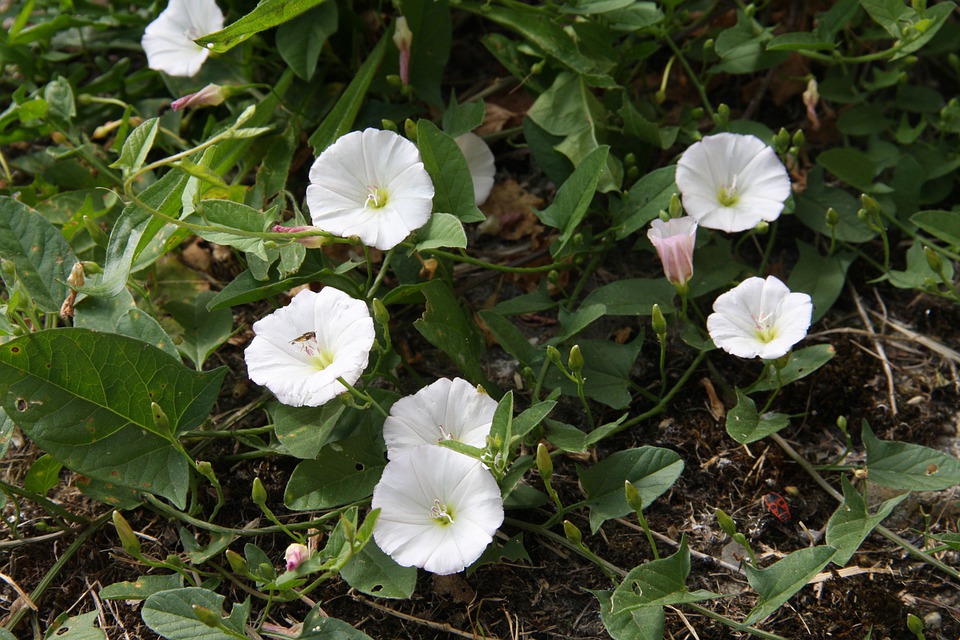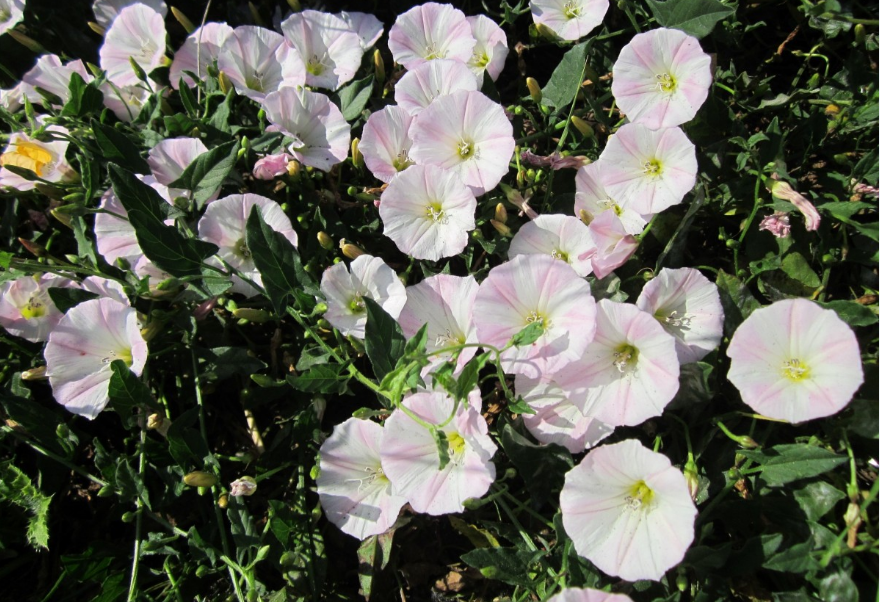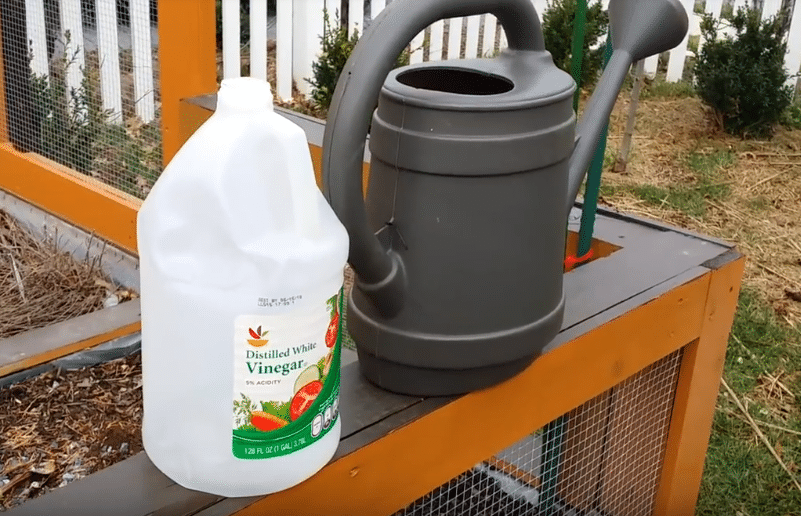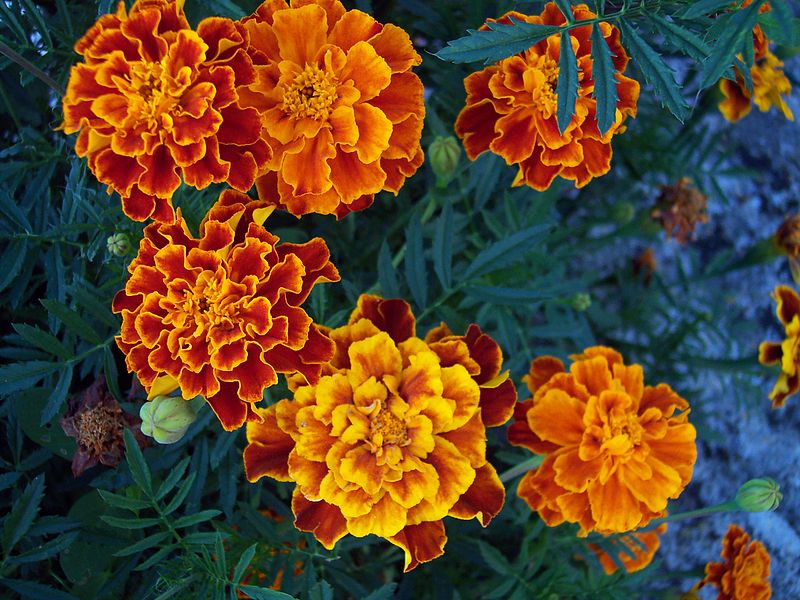This dicotyledonous plant belongs to the Convolvulaceae family. Although elegant, hedge bindweed and field bindweed are considered weeds or weeds by many gardeners in the same way as dandelion. It must be said that like quackgrass, this plant has an unusual root system making its extermination difficult. Indeed, if you forget even one piece, it will cause a growth. The seeds of these plants are also easily re-seeded by birds. This is why it is very difficult to get rid of it in the garden. With a lot of determination and patience, good gestures and ecological products, it is nevertheless possible to get rid of them without chemicals.
Getting rid of bindweed: an obligation? Absolutely not!

First of all, let’s remember that bindweed is a useful plant in flower beds or hedges. This is, for example, a good indicator of excess fertilizer in the garden. This can therefore show the gardener that he must limit nitrogen on his land. This bioindicator is also an indicator that the soil is too compact. Its roots also make it possible to decompact this compaction. Bindweeds are also honey plants which attract pollinating insects, primarily bees. It is therefore beneficial for the flowers, but also the vegetable garden. In fact, many gardeners keep them for this reason by cutting the flowers before they can disperse their seeds.
However, like any weed, it competes with and smothers surrounding plants by capturing water, light and nutrients from the soil. This is particularly the case in the event of a strong invasion. With this information in hand, it’s up to you to decide whether you want to remove these plants.
How to hunt bindweed in your garden?

1) Good actions against bindweed
Some gestures are completely unnecessary. This is for example the case of using a thermal weeder which does not reach the deep roots of this plant. As for the use of a spade or a tiller, it is not recommended. This can leave sections of roots in the soil and break them. So you will definitely be invaded after that! Other actions, however, make it possible to better control its spread, or even to stop it. To avoid aerial dispersal (dispersal of seeds by birds), cut the aerial parts before they produce seeds. Also remember to apply mulch which will prevent the establishment of bindweed and pass the hoe every 8 days on areas where the soil is bare.
2) Manual uprooting, the most effective technique
Manual uprooting or hand weeding should be carried out in spring or early summer on dry land. Gently turn the soil over 30 cm with a grelinette, a gouge or a spade fork and remove the root tips. If you forget some, the bindweed may grow again, so be careful and avoid breaking the roots. The more you break the roots, the more these plants will come back and grow. Then repeat every ten days to exhaust the plant. Over time, it will grow less and less. Yes! eradicating this plant is a long-term and repetitive task!
3) White vinegar or boiling water

This ecological product, very useful in the garden, kills its stems in just a few hours. To enjoy its weeding powersimply spray it using a spray bottle on the plants. Then repeat 10 days later. Already weakened plants will not resist it. If you are out of white vinegar, you can use boiling pasta or potato water to kill the plant. Repeat 2 or 3 times on the shoots to be treated and you will see that it is excellent for weeding. Afterwards, remove the roots as explained earlier.
4) Solarization to eliminate bindweed
Solarization is a very popular technique against weeds. It consists of covering the invaded soil with a thick black tarpaulin the ends of which you will have buried or blocked in place. After its installation, the tarpaulin must remain on site for several months to properly smother the vegetation. This technique is excellent on large areas. Note, however, that it is not very aesthetic. Mulch or dead leaves will cleverly camouflage it. For a few scattered plants within your flowerbeds or vegetable plants, prefer to place a simple tin can on each plant to be eliminated.
5) Other plants to fight against bindweed? Yes and no!

Plants and flowers are an often very effective ecological weapon. Toxic for unwanted plants or harmful insects, they can effectively protect the garden. Also, we very often recommend the nematocidal tagetes which would be an excellent herbicide against this weed. Its little cousin tagetes patula (or marigold) would be an excellent preventative in addition to also repelling quack grass, nematodes and aphids. Tagetes minuta produces a powerful and destructive herbicidal substance. However, the effectiveness of these plants is debated among gardeners.


